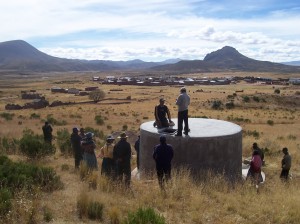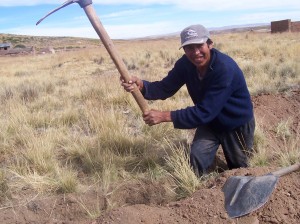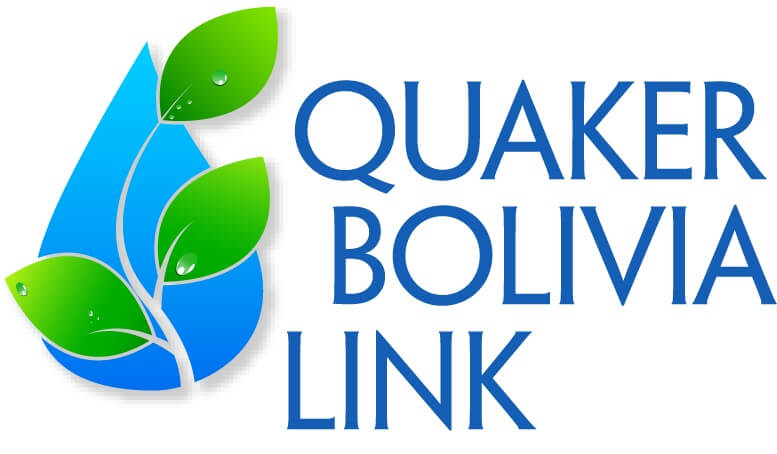[Note from the webmaster: Robert Vincent is the Project Coordinator for QBL-US.]
I returned from Bolivia a few weeks ago and wanted to share about the progress of our water project in Janko Marca Sirpa. We have been advertising it as Jankoaqui, but the actual name is Janko Marca Sirpa.
As a reminder, this project will restore and extend a previous water system that was installed several years ago by the municipality. The original project included digging a well, installing an electrical pump, building a water tank, and then piping water to a single water faucet in the village square. Since that time, the water tank has started to leak in several place. Your donations will refurbish the water tank, provide piping and faucets to each family in the community and train each family in hygiene and managing the water system.
I arrived early in the morning. I usually ask that our staff not announce my visits because the community, in their enthusiasm and appreciation for the project, will often organize elaborate and generous receptions. This time we met with the committee and several others from the community who were interested in why a foreigner had visited (these communities rarely get foreign visitors). Since the project only recently began, Eloy, one of QBL’s technical staff, took this opportunity to explain the next stage in implementing the project and also introduce the mason that will be working on refurbishing the water tank. I asked a few general questions. The village was appreciative of our help in this community and will work enthusiastically over the next few months installing the piping and family faucets.

Eloy and the mason examine the current water tank and decide what needs to be done to fix it. After developing their plan, they talk with the village members and project committee to organize work schedules. You can see the village center in the background.
After meeting with the community, we walked to the water tank that was installed several years ago. It had started leaking in several places and the village is hesitant to fill it up, recognizing that much of the water will be lost. Eloy and the mason examined the tank and, together with the project committee, organized the next steps to fix it. They asked the community about local building materials, such as sand and gravel. They had to plan when they were going to shut the current water system down and started organizing who would be responsible for feeding the mason and on which days. This community is fortunate in that they have electricity. The national government has been working hard to supply many of the rural communities with electricity. This will help our mason as he removes some of the old cement work on the tank.

A villager digging his ditch in preparation for the piping. After trying unsuccessfully after several attempts to take this picture while he worked, I think that the smile may be a little artificial!
The village has already been busy at work digging ditches for the piping that will come in the next month or so. This is always the hardest part of the project. Most of the time, the ditches are dug with picks and shovels. This village apparently has it pretty easy because most of the ditches are on flat land and through topsoil. Some villages have to dig ditches over long stretches of land, over hills and rocky terrain. It is not uncommon for them to use dynamite (fortunately not when I’ve been there!!). Of course, this is all relative. It is still a tremendous amount of work to dig several kilometers of ditch by hand in order to get a functioning water system. Even when the villagers have to do such back-breaking work, their appreciation and expressions of gratitude for the support that QBL provides through our donors can be overwhelming. It is impossible to express this gratitude in words.

